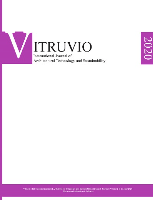
VITRUVIO-International Journal of Architectural Technology and Sustainability
Scope & Guideline
Elevating architectural discourse with cutting-edge research.
Introduction
Aims and Scopes
- Sustainable Architecture and Design:
The journal emphasizes sustainable practices in architectural design, focusing on eco-friendly materials, energy-efficient buildings, and innovative construction methods that minimize environmental impact. - Cultural Heritage Preservation:
A significant aspect of the journal's focus is the preservation and adaptive reuse of cultural heritage sites, examining methodologies and technologies that enhance the conservation of historic structures. - Digital Technologies in Architecture:
The integration of digital tools, such as Building Information Modeling (BIM) and digital twins, is a recurring theme, showcasing how technology can improve architectural processes and heritage management. - Community-Centric Urban Design:
Research often explores community engagement and human-centered design approaches, aiming to create inclusive public spaces that foster social interaction and resilience. - Innovative Materials and Construction Techniques:
The journal covers advancements in construction materials and methods, including modular architecture and circular design principles, to promote sustainability in the built environment.
Trending and Emerging
- Resilient Design Strategies:
Recent publications reveal a growing focus on resilience in urban environments, addressing challenges such as climate change and socio-economic shifts, and promoting designs that enhance community adaptability. - Integration of Digital Tools:
The use of digital technologies, including BIM and digital twins, has surged, highlighting their importance in architectural design, heritage conservation, and project management. - Circular Economy Principles:
There is an increasing emphasis on circular design practices, reflecting a broader commitment to sustainability that prioritizes resource efficiency and waste reduction in construction. - Human-Centered Public Spaces:
Research trends indicate a heightened interest in designing public spaces that prioritize user experience and social interaction, aiming for inclusivity and community engagement. - Adaptive Reuse and Hybridization:
Adaptive reuse strategies are gaining traction, with a focus on hybridizing modern and historical structures, showcasing innovative ways to preserve cultural identity while meeting contemporary needs.
Declining or Waning
- Traditional Construction Methods:
There has been a noticeable decrease in papers focusing on conventional construction practices, as the discourse shifts towards innovative and sustainable techniques that align with modern architectural needs. - Linear Architectural Processes:
Research centered around linear processes in construction has waned, with a growing preference for circular economy approaches that emphasize reuse and recycling of materials. - Historical Architectural Styles:
While historical architectural styles remain important, the journal has seen a decline in discussions solely focused on aesthetic or stylistic analyses, favoring more practical applications of heritage in contemporary contexts. - Purely Theoretical Frameworks:
The journal has moved away from purely theoretical explorations without practical implications, emphasizing instead research that combines theory with actionable solutions for real-world architectural challenges.
Similar Journals

Advances in Civil and Architectural Engineering
Advancing Knowledge for a Sustainable Built EnvironmentAdvances in Civil and Architectural Engineering is a cutting-edge scholarly journal dedicated to the dissemination of pioneering research in the realm of civil engineering and architecture. Published by the esteemed Josip Juraj Strossmayer University of Osijek, Faculty of Civil Engineering and Architecture, this journal operates under an Open Access model since 2022, allowing for unrestricted access to its rich repository of articles. The journal aims to bridge the gap between academia and industry by providing a platform for innovative studies, technical advancements, and best practices that contribute to the evolution of sustainable construction and architectural design. With its focus on interdisciplinary approaches and contemporary challenges in the field, Advances in Civil and Architectural Engineering serves as an invaluable resource for researchers, professionals, and students seeking to enhance their understanding and impact in this vital area of engineering. The journal's ISSN is 2975-3848, and it is committed to fostering the advancement of knowledge and collaboration within the global engineering community.
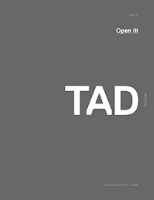
Technology-Architecture + Design
Crafting Tomorrow’s Spaces with Cutting-edge ResearchTechnology-Architecture + Design is a pioneering academic journal published by Taylor & Francis Ltd, dedicated to exploring the intersection of technology within architectural and design practices. With an impactful presence in the field since its inception in 2017, the journal has quickly ascended in academic rankings, achieving a Q2 categorization in Architecture and a notable Q1 ranking in Visual Arts and Performing Arts, underscoring its significance in these dynamic areas of study. The journal aims to provide an open platform for innovative research that addresses contemporary challenges in architecture and urban planning, utilizing technological advancements as a central theme. As a vital resource for scholars, practitioners, and students alike, Technology-Architecture + Design publishes high-quality, peer-reviewed articles that contribute to the discourse surrounding sustainable design, digital fabrication, and smart urbanism, making it an essential read for those passionate about the future of built environments.
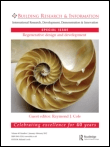
BUILDING RESEARCH AND INFORMATION
Connecting scholars to shape the future of engineering.BUILDING RESEARCH AND INFORMATION is a premier academic journal dedicated to the advancement of knowledge in the fields of Building and Construction as well as Civil and Structural Engineering. Published by Routledge Journals, Taylor & Francis Ltd, this journal boasts an impressive Q1 ranking in both categories as of 2023, emphasizing its reputation for disseminating high-quality research. Established in 1991, it has continually provided a vital platform for scholarly dialogue on innovative building practices, sustainable construction techniques, and cutting-edge engineering solutions, with ongoing contributions accepted until 2024. The journal is renowned for its extensive insights and interdisciplinary approach, and with a Scopus rank placing it in the 88th percentile for both building and construction engineering and civil and structural engineering, it presents an exceptional opportunity for researchers, professionals, and students to engage with and publish influential findings. While the journal is not open access, it remains a cornerstone for those aiming to deepen their understanding of contemporary challenges and trends in the built environment.
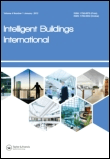
Intelligent Buildings International
Unlocking the Potential of Intelligent EnvironmentsIntelligent Buildings International, published by Taylor & Francis Ltd, is a premier journal dedicated to advancing knowledge in the interdisciplinary domains of building construction, civil engineering, computer science applications, and planning. Since its inception in 2009, this journal has become a vital resource for researchers, professionals, and students, offering a platform for high-quality scholarly articles that explore innovative strategies and technologies in intelligent building design and efficiencies. With its significant impact factor reflected in its Q2 and Q3 quartile rankings across various related fields, and strong Scopus rankings placing it among the top journals in Geography, Building, and Civil Engineering, Intelligent Buildings International stands out for its commitment to fostering research that enhances the sustainability and functionality of contemporary architectural practices. Readers can access a wealth of articles that illuminate the complexities of smart building technologies and their implications for future construction practices, making it an essential addition to any academic library.
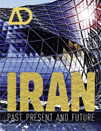
ARCHITECTURAL DESIGN
Unveiling Contemporary Design PracticesARCHITECTURAL DESIGN, a leading journal published by Wiley Periodicals, Inc., serves as a vital platform for discourse in the fields of architecture and visual arts. With an ISSN of 0003-8504 and an E-ISSN of 1554-2769, this esteemed publication offers comprehensive insights into contemporary design practices and emerging architectural theories. Established in the United States and continuously evolving from 2002 to 2024, the journal has secured a prominent position with a Q3 status in Architecture and an impressive Q1 ranking in Visual Arts and Performing Arts as of 2023. Its Scopus rankings further affirm its relevance, with a percentile ranking of 82nd in the Visual Arts category. Although it does not currently offer Open Access options, the journal remains dedicated to disseminating high-caliber research and innovative design strategies that engage a diverse readership of researchers, professionals, and students alike. The contributions published within its pages are instrumental in shaping the discourse around architecture, making ARCHITECTURAL DESIGN an indispensable resource for anyone passionate about the built environment.
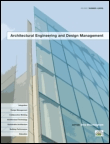
Architectural Engineering and Design Management
Fostering interdisciplinary insights for a sustainable future.Architectural Engineering and Design Management, published by Taylor & Francis Ltd, is a leading journal dedicated to the interdisciplinary fields of architectural engineering and design management. Since its inception in 2005, the journal has established itself as an essential resource for researchers and practitioners, showcasing the latest developments and innovative practices within the architecture and construction industries. With a commendable impact factor reflected in its Q1 ranking in Architecture and high standings across building and construction, it addresses critical themes such as sustainable design, integrated construction processes, and management strategies that drive efficiency and creativity in evolving architectural contexts. Researchers will find the journal's commitment to disseminating high-quality research—evidenced by its impressive Scopus rankings, including a #13 ranking in Architecture—particularly valuable as it fosters a deeper understanding and advancement in the profession. The journal is accessible in print and online, ensuring that academic and professional communities stay at the forefront of architectural engineering innovation.
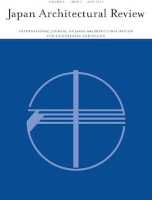
Japan Architectural Review
Exploring the intersection of architecture and environmental engineering.Japan Architectural Review is a premier open-access journal published by WILEY, dedicated to advancing the fields of architecture, environmental engineering, and modeling and simulation. Since its inception, this journal has emerged as a critical platform for disseminating innovative research, offering insights into the latest trends and challenges facing the built environment and sustainability practices. With an impact factor reflecting its growing influence, especially in the Q2 category of Architecture and notable rankings in environmental engineering and modeling disciplines, it serves as an essential resource for researchers, professionals, and students alike. The journal's commitment to open access since 2018 has further enhanced its reach, making high-quality research accessible to a global audience. Spanning an important timeline from 2019 to 2024, the Japan Architectural Review facilitates a collaborative discourse among scholars, encouraging innovative solutions to contemporary architectural challenges.
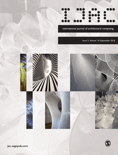
International Journal of Architectural Computing
Bridging Design and Technology through Innovation.International Journal of Architectural Computing, published by SAGE Publications Ltd, serves as a vital platform for researchers, professionals, and students engaged in the intricate intersections of architecture, computing, and design. With an ISSN of 1478-0771 and an E-ISSN of 2048-3988, this esteemed journal has maintained a commendable standing in the academic community, reflected in its categorization within the top Quartiles (Q2) for both Building and Construction and Computer Graphics and Computer-Aided Design in 2023. The journal operates out of the United Kingdom and showcases innovative research that revolutionizes architectural practices through computational advancements, contributing meaningfully to global discourse. While the journal does not currently follow an Open Access model, it continues to uphold high academic standards, as indicated by its Scopus rankings, including a notable rank of #93 out of 223 in Engineering - Building and Construction. The journal encompasses a wide range of topics, inviting submissions that address contemporary challenges and methodologies in architectural computing, making it essential reading for those passionate about bridging the gap between design and technology.

Architecture Civil Engineering Environment
Transforming Knowledge into Sustainable PracticesArchitecture Civil Engineering Environment, published by Silesian University of Technology, is an esteemed open-access journal dedicated to advancing research and scholarship in the fields of architecture, civil engineering, and environmental science. With its ISSN 1899-0142 and E-ISSN 2720-6947, the journal facilitates the dissemination of innovative practices and methodologies to an international audience. Since transitioning to open access in 2016, it has fostered a collaborative environment that empowers researchers and professionals to share their work freely, thus enhancing the visibility and impact of contemporary studies. The journal emphasizes interdisciplinary research, aiming to bridge gaps between architectural design, civil infrastructure development, and environmental sustainability. By publishing high-quality peer-reviewed articles, Architecture Civil Engineering Environment plays a crucial role in shaping the future of sustainable practices within these intertwined disciplines, making it an essential resource for scholars, practitioners, and students alike.

Landscape Architecture and Art
Celebrating the Fusion of Ecology and Visual ArtsLandscape Architecture and Art is a distinguished journal published by the Latvia University of Life Sciences and Technologies, specializing in the intersection of landscape architecture, environmental design, and the visual arts. Established in 2016, this journal has rapidly garnered recognition in various academic categories, achieving Q3 ranking in Agricultural and Biological Sciences (miscellaneous), Q4 in Geography, Planning and Development, and notably Q1 in Visual Arts and Performing Arts as of 2023. With its ISSN 2255-8632 and E-ISSN 2255-8640, the journal provides an essential platform for researchers, professionals, and students to explore innovative approaches and sustainable practices in landscape design and conservation. Although currently not open access, the journal's commitment to high-quality research is evident through its impressive Scopus rankings, particularly in the Arts and Humanities with a commendable 88th percentile for Visual Arts and Performing Arts. Located in Jelgava, Latvia, this journal serves as a vital resource for advancing knowledge and fostering collaboration in the fields of landscape architecture and environmental stewardship.